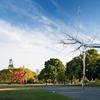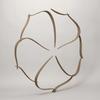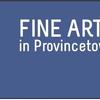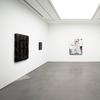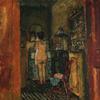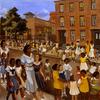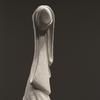Clark Art Institute Explores the Venice Biennale Through Unique Collection of Materials Created for the Leading International Showcase of Contemporary Art
- WILLIAMSTOWN, Massachusetts
- /
- May 02, 2019
Art’s Biggest Stage: Collecting the Venice Biennale, 2007–2019 opens July 4
The Venice Biennale is the largest and longest-running recurring art exhibition in the world, attracting global interest and participation. In addition to a themed exhibition curated by an artistic director, more than eighty national pavilions and dozens of officially sanctioned “collateral events” occur during the six-month event. There is a long history of special publications and related materials that are produced in support of these exhibitions. Since 2007, the Clark Art Institute’s library has built an unparalleled collection of these editioned artworks, books, posters, publicity materials, and other, more unusual objects. This summer, visitors to the Clark will have the opportunity to experience the Biennale through the lens of these items. Art’s Biggest Stage: Collecting the Venice Biennale, 2007–2019 presents a unique look at the Biennale by showcasing the materials in the Clark’s growing collection and exploring the questions of identity, nationhood, and spectacle central to the event. The exhibition, curated by Brian Sholis, an independent curator and editor, offers insights into a period when contemporary art has received increasing attention in mainstream culture, when the art world’s geographic reach has expanded beyond its traditional centers, and when technology has reshaped how such events are encountered, both in-person and online. Art’s Biggest Stage is on view July 4–October 14, 2019, at the Lunder Center at Stone Hill, located on the Clark’s campus in Williamstown, Massachusetts.
“No other event compares to the scope, the scale, and the surprise of the Venice Biennale,” said Olivier Meslay, Hardymon Director of the Clark. “While the experience of attending the Biennale is unique and powerful, the objects and material artists create around the experience are every bit as intriguing and evocative. When I first arrived at the Clark in 2016 and discovered the amazing treasure trove in the library’s collection, I knew that it would make for a fascinating exhibition that would give our visitors an opportunity to experience a slice of the Biennale and the growing phenomenon of spectacle in the contemporary art world. Their range captures a sense of the spectacle that is the Biennale and provides a wonderful opportunity to examine the creativity of emerging and established contemporary artists.”
Following the tradition of nineteenth-century salons and world’s fairs, the first Biennale was held in 1895. Over time, the event has evolved into a cross-continental survey of contemporary art and the social issues it engages. This massive endeavor overtakes the city of Venice, creating an experience that is part art extravaganza, part urban tourism, and, for the city of Venice, a powerful economic engine. In 2017, 615,000 tourists descended on Venice for the Biennale.
“This exhibition offers Clark visitors a wonderful opportunity to discover the Biennale, and by extension, the breadth of artmaking today, through the editioned artworks and other materials created for its myriad presentations,” said Sholis. “The Biennale has been the preeminent event in contemporary art for half a century, and its importance increases as contemporary art crosses over into popular culture. Everyone who has visited the Biennale leaves with great stories—and these objects tell many such tales.”
For the 2009 Biennale, for example, artists Michael Elmgreen and Ingar Dragset organized the Danish and Nordic Pavilions. Rather than present an exhibition of only their own work, the duo created The Collectors, two fictional worlds that turned the adjacent pavilions into houses—one for a bourgeois family, one for a single gay man—and invited more than twenty artists working in various media to fill them. Those materials, plus sketchbooks and more, are included in the exhibition.
The national-pavilion structure encourages many participating artists to consider questions of personal and national identity. In 2017, the Tunisian Pavilion and the artists’ collective Neue Slovenische Kunst (NSK) both highlighted the challenges of migration. Tunisia returned to the Biennale that year after a long absence, though not with a traditional pavilion. Instead, its project, The Absence of Paths, came in the form of a universal visa, or Freesa, that visitors could apply for and obtain at one of three kiosks installed across the city. The document, resembling an official passport, identifies the holder as a migrant, a global citizen in a world with no borders. Similarly, NSK brought its ongoing project NSK State in Time in the form of an NSK passport office. Bearers become citizens of the NSK state, a conceptual “micronation” created by the collective’s artists. Both application documents and “passports” from each pavilion are included in the exhibition.
The exhibition includes an array of other distinctive objects including vinyl records, tote bags, beer bottles, a cowbell, party invitations, posters, wallpaper, wax-sealed letters, artists’ books, clothing, and more created by—or, in some cases responding to—artists from around the world. Some of the objects included in the Clark’s show will be from the 2019 edition of the Biennale, which opens on May 11 and will be ongoing in Venice while Art’s Biggest Stage is on view in Williamstown.
A companion catalogue is being published by the Clark and distributed by Yale University Press. The illustrated catalogue is edited by exhibition curator Brian Sholis and includes essays by Sholis, art librarian and researcher Sarah Hamerman, and Susan Roeper, director of the Clark’s library.
The Clark’s summer 2019 exhibitions and programs are made possible in part by generous support from Denise Littlefield Sobel. Support for Art's Biggest Stage: Collecting the Venice Biennale, 2007–2019 is provided by Maureen Fennessy Bousa and Edward P. Bousa and Amy and Charlie Scharf, with additional support from the Rohit and Katharine Desai Family Foundation.

